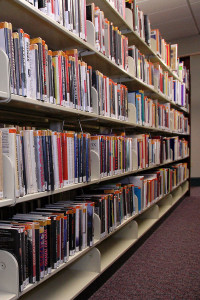
Reference
 Writing in The Lutheran Quarterly fifty years ago, an official of the Church of Christ, Scientist, in Boston candidly spoke of “the difficulties in the way of a really balanced view of Christian Science … Our own scholarship has not had centuries to ripen as has the great body of Lutheran learning.”
Writing in The Lutheran Quarterly fifty years ago, an official of the Church of Christ, Scientist, in Boston candidly spoke of “the difficulties in the way of a really balanced view of Christian Science … Our own scholarship has not had centuries to ripen as has the great body of Lutheran learning.”
As these words suggest, the maturing of scholarship on Christian Science is a gradual process, and one that is far from over as a new millennium begins. The sources listed below illustrate something of this maturing. They touch on many different aspects of the denomination’s history, organization, practice, and relations with the wider society. The writers come from varying backgrounds. These sources point to both the strides that have been made in the past century and the far-ranging, surprisingly contemporary issues with which scholars writing on Christian Science continue to wrestle.
The list includes books, published articles, and unpublished papers and commentaries delivered in various academic forums. It is far from comprehensive. Most of the more familiar and readily available published sources on the denomination have been omitted. In some cases the site provides links to other sites where the full texts can be obtained through the web. In some other cases, where the originals are difficult to obtain elsewhere, and where appropriate permissions have been obtained, the site reprints the full text.
The Fund hopes this reference file will serve as a useful resource in making a number of works more widely known and more readily available to scholars and other interested readers.
EARLY SCHOLARLY PERSPECTIVES
Karl Holl, “Der Szientismus,” Gesammelte Aufsätze zur Kirchengeschichte (Tübingen: J.C.B. Muhr, 1921-28), 460-479. Trans. Theodor Stanger, Mary Gottschalk.
Mary Burt Messer, “The Advance of Woman,” The Family in the Making (New York: G.P. Putnam’s Sons, 1928), 351-355.
THEOLOGICAL ISSUES
Pam Robbins and Robley Whitson, “Mary Baker Eddy’s Christian Science,” The Sign 59.10 (July/August 1980), 16-21.
Robert Peel, “Mrs. Eddy as a Spiritual Thinker,” The First Church of Christ, Scientist, Boston, August 1985.
Stephen Gottschalk, “Christian Science Today: Resuming the Dialogue” Christian Century, Dec. 17, 1986, 1146-1148.
Stephen Gottschalk, “Theodicy after Auschwitz and the Reality of God,” Union Seminary Quarterly Review, 1987, nos. 3-4, 77-91.
Stephen Gottschalk, “Critic’s Corner: Update on Christian Science,” Theology Today, April 1987, 111-115.
Robert Peel, “Science and Health with Key to the Scriptures: ‘…to gyve science & helthe to his puple…'”, in Ernest Frerichs, ed. The Bible and Bibles in America (Atlanta: Scholars Press, 1988), 193-213.
HEALING PRACTICE
Carol Murphy, “The Image That Heals,” Pastoral Psychology, Feb. 1971, 37-42.
Robert Peel, “The Christian Science Practitioner,” Journal of Pastoral Counseling, IV, 1, Spring 1969, 39-42.
Massachusetts Department of Public Health, “Christian Science and Community Medicine,” The New England Journal of Medicine (Feb. 14, 1974), 401-402.
Robert Peel, “Christian Science and Value Clarification,” Voices: Journal of the American Academy of Psychotherapists, 13, 3, Fall 1977, 62-65.
Thomas Johnsen, “Christian Scientists and the Medical Profession: A Historical Perspective,” Medical Heritage, Jan/Feb 1986, 70-77.
Christian Science Committee on Publication, “An Empirical Analysis of Medical Evidence in Christian Science Testimonies of Healing, 1969-1988.” Appendix, Freedom and Responsibility: Christian Science Healing for Children (Boston: The First Church of Christ, Scientist, 1989), 110-127.
Thomas Johnsen, “Christian Science: A Comment,” 27th Annual Postgraduate Symposium on Medicine and Religion, University of Kansas Medical Center, October 1991.
CHURCH AND SOCIETY
Lee Z. Johnson, “Christian Science Committee on Publication: A Study of Group and Press Interaction,” (Syracuse University: doctoral dissertation, 1963)
Robert Peel, “Mary Baker Eddy and The Christian Science Monitor,” The First Church of Christ, Scientist, Boston, July 24, 1977.
Robert Peel, “Religion’s Emerging Role,” in Understanding our Century: Commemorating the 75th Anniversary of The Christian Science Monitor (Boston: The Christian Science Publishing Society, 1984), 107-119.
HISTORICAL ISSUES
Thomas Johnsen, “Historical Consensus and Christian Science: The Career of a Manuscript Controversy,” The New England Quarterly, LIII, 1 (March 1980), 3-22.
Christian Science Committee on Publication, “Mary Baker Eddy: Another View,” American Heritage (Feb/March 1982).
Thomas Johnsen, “Christianity as Science: Mary Baker Eddy’s Unorthodox Vision,” American Society of Church History, Denver, 1983.
Jean McDonald, “Mary Baker Eddy and the Nineteenth-Century ‘Public’ Woman: A Feminist Reappraisal,” Journal of Feminist Studies in Religion 2.1 (Spring 1986), 89-111.
Thomas Johnsen, “Understanding Mary Baker Eddy,” New England American Studies Association, Boston, April 2002.
SCHOLARLY REFERENCE
Stephen Gottschalk, “Christian Science” and “Mary Baker Eddy,” Mircea Eliade, ed., “The Encyclopedia of Religion (New York: Collier Macmillan, 1987), III, 442-446 and V, 29-31.
Stephen Gottschalk, “Christian Science and Harmonialism,” in Lippy and Williams, eds., Encyclopedia of the American Religious Experience: Studies of Traditions and Movements (New York: Charles Scribner’s Sons, 1988), II, 902-916.
Robert Peel, “Christian Science” and “Christian Science Practitioner,” in Rodney Hunter, ed., Dictionary of Pastoral Care and Counseling (Nashville: Abingdon, 1990), 152-154.
Frederic Hunter, “Robert Peel,” American National Biography (Oxford University Press: online, 2006).
“The scholar who knows a tradition tries to go back to the sources of its flow. You can see that we think of tradition not as a stagnant pool but as a flowing stream…
“We examine traditions not to embarrass those who are currently its custodians… Once we realize the dynamite in tradition, we will find that it can blow apart encrustations, loosen what was hardened, make room for new flow, new growth.
“…Petty academic disputes or bureaucratic debates are of little interest. The dynamite in tradition says, ‘Take a longer look, and you will find riches that contribute to human well-being.’ “
— Martin E. Marty, Bulletin of the Park Ridge Center (July/August 1988) 3:1, 11, writing on the Park Ridge Center’s book, Health and Medicine in the Christian Science Tradition, by Robert Peel.
